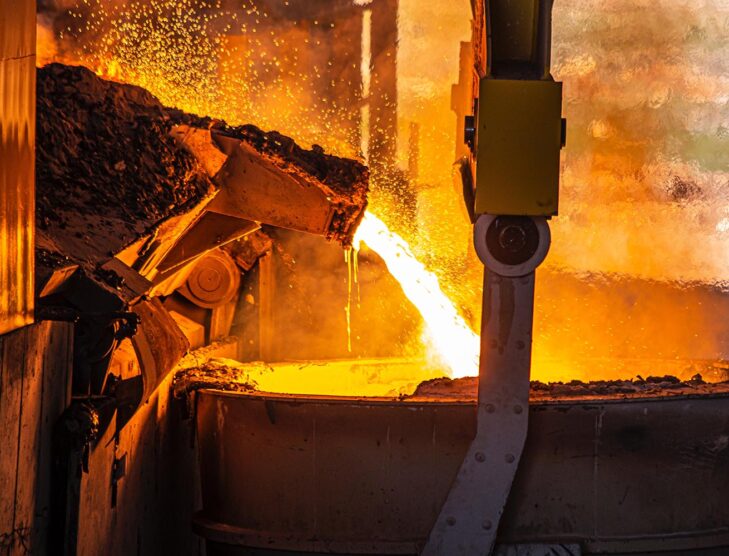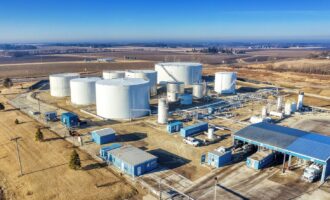
A roadmap to zero emissions for U.S. manufacturing
In December 2021, U.S. President Joseph Biden signed an executive order for the United States government to achieve net zero emissions by 2050. The Biden administration has also confirmed its intention to reach 100% carbon pollution-free electricity by 2035. It is critical to have the world’s largest economy supporting global climate efforts. Still, decarbonisation is an uphill battle, with some sectors more straightforward than others.
The industrial sector is one of the most difficult to decarbonise. Yet, it is critical to achieving U.S. climate objectives. In 2021, industry accounted for one-third of U.S. domestic greenhouse gas (GHG) emissions. Industry emissions are derived from the combustion and use of fuels, generation of electricity used at industrial facilities, non-energy-related process emissions and the lifecycle emissions of manufactured products.
A transformational rather than incremental approach to emissions reductions is required to deliver ongoing economic growth, positive health outcomes and future jobs for 11.4 million U.S. manufacturing workers, according to the U.S. Department of Energy (DOE).
On September 7, 2022, during a roundtable with industry stakeholders and leaders, the DOE reaffirmed its commitment to decarbonising the sector with the release of its Industrial Decarbonisation Roadmap. The roadmap includes technology pathways to reduce industrial emissions by 87% by 2050 and provides an “agenda for government, industry, and other stakeholders to work together to accelerate emissions reductions.” The intention is to position the U.S. as a global leader in innovation in the industrial sector, though, the roadmap is scoping in nature and does not attempt to prioritise technologies.
The roadmap focuses primarily on energy-related GHG emissions of the five highest carbon dioxide (CO2) emitting subsectors: chemical manufacturing, petroleum refining, iron and steel manufacturing, food and beverage, and cement. These subsectors account for 51% of energy-related industrial CO2 emissions and 15% of total CO2 in the region. The roadmap also noted the need to evaluate additional industrial subsectors for decarbonisation opportunities.
While fuel-related and electricity generation CO2 emissions were included for all subsectors in the roadmap, only the steel and cement subsectors included process-related CO2 emissions. Methane emissions, a major contributor to the rising concentration of GHGs in the earth’s atmosphere, and nitrous oxide were not included in the report. Other pollutants will require attention as the industrial sector decarbonises, says the DOE.
Four key technology pillars to reduce near-term and future industrial emissions were outlined in the roadmap—energy efficiency; industrial electrification; low-carbon fuels, feedstocks, and energy sources (LCFFES); and carbon capture, utilisation, and storage (CCUS).
Energy efficiency offers the greatest opportunity for immediate decarbonisation by focusing on improvements in system efficiencies, the recovery of thermal energy, process yield, expansion of energy management practices and a wider adoption of smart manufacturing strategies.
Over half of manufacturing energy is consumed in thermal processing, with less than 5% of operations electrified. Industrial electrification is the second technology pillar, with the DOE reiterating the importance of advancements in low-carbon electricity, from both grid and onsite renewable generation, and the opportunity to leverage decarbonised and inexpensive electricity sources.
The industrial sector is typically reliant on fossil fuels. However, the roadmap outlined the need for clean energy technology including renewably sourced electricity, nuclear energy for electricity and heat, concentrating solar power, geothermal energy and biofuels. LCFFES help minimise combustion-associated emissions in industrial processes and aides broader decarbonisation. The DOE detailed a need for the development of fuel-flexible processes and the importance of clean hydrogen fuels and feedstocks in industrial applications. Although, the report noted that the cost of clean hydrogen needs to fall to USD 1.00 per kilogram and more efficient low- and high-temperature electrolysers need to be developed.
CCUS is the largest source of long-term emission reductions. Despite an earlier deployment of energy efficiency measures, LCFFES and electrification; these pillars only account for 40% of targeted emissions reductions. CCUS is not readily available, and the roadmap cited the need to lower the cost of carbon capture to improve economic viability and to improve safety.
Chemical manufacturing has undergone significant growth in recent years. According to the DOE, the pursuit of net-zero emissions in this subsector relies on the development of low thermal budget process heating solutions and improvements in the effectiveness of thermal energy use. The roadmap also outlined the opportunity to expand advanced reactions, catalysts and reactor systems—to improve reaction performance—and to electrify processes using hydrogen, biomass or waste as fuel and feedstocks for manufacturing. An increase in materials efficiency and circularity was also identified as a key input in the decarbonisation of chemical manufacturing.
Hydrocracking, atmospheric distillation, catalytic cracking, steam methane reforming and regenerative catalytic reforming produce most emissions in the petroleum refining sector in the U.S. Transport and refineries are intrinsically linked. Aside from improving energy efficiency in its processes and on-site steam and power generation, the roadmap outlined the opportunity to produce low-net-GHG-emission liquid hydrocarbon fuels and to create less carbon-intensive refinery processes while decarbonising transportation and chemicals.
Iron and steel manufacturing continues to be one of the most energy-intensive industrial subsectors due to ongoing use of coal as a feedstock and the chemical reduction of iron oxide. The decarbonisation pathway includes a transition to low- and non-carbon fuels and the expansion of industrial electrification in this subsector. Pilot demonstrations for transformative technologies are required, according to the DOE, including hydrogen-steel production, electrolysis of iron ore and CCUS. Under one modelling scenario, the DOE projected U.S. steel industry GHG emissions could fall to almost zero in 2050, alongside a 12% increase in steel production.
Advancements in research, development and demonstration (RD&D) for the electrification of process heating (especially for ovens and fryers), electric and hybrid boilers, evaporation and pasteurisation processes are required in the food and beverage subsector. The roadmap also emphasised the need to reduce significant food waste throughout the supply chains and to pursue recycling and material efficiency via alternative packaging and package waste reduction.
Process-related CO2 emissions from calcination, the thermal treatment of a solid chemical compound whereby the compound is raised to high temperature without melting under restricted supply of ambient oxygen, generally for the purpose of removing impurities or volatile substances and/or to incur thermal decomposition, account for around 58% of emissions in the cement industry with 42% of emissions energy-related. Heat from coal and petroleum coke combustion comprise 88% of total energy consumption. The DOE roadmap emphasised the importance of CCUS technologies in the cement sector, as well as increasing the use of innovative chemistry solutions including low-carbon binding materials and natural supplementary cementitious materials to lower the carbon intensity of clinker and solid materials used to create cement. The DOE believes U.S. cement manufacturing GHG emissions can reach almost zero in 2050, alongside a corresponding 46% increase in cement production. Although, 65% of emissions reductions come from the adoption of CCUS technology.
The roadmap offered several recommendations to meet industrial decarbonisation emissions targets including major advancements in RD&D early-stage technologies across all decarbonisation pillars.Investment in multiple concurrent process pathways was outlined, including electrification, efficiency, low-carbon fuels, CCUS, and other alternative approaches. The roadmap emphasised the need to scale through demonstrations to accelerate new technologies and to de-risk deployment.
Energy used for process heating predominantly originates from fossil fuels. Another key recommendation was to address process heating across all subsectors by maximising efficiency and resource utilisation while transitioning to electrified and low-carbon fuel and energy sources.
The DOE also highlighted the importance of integrating solutions into process systems and supply chains to reduce energy and emissions at a system level. An expansion in the use of lifecycle and techno-economic analysis was recommended to ensure that low-carbon solutions have the desired positive impact and are commercially viable.
The Industrial Decarbonisation Roadmap technology pillars and pathways can remove almost 400 million metric tons of CO2 per year in the five subsectors. Nevertheless, hard-to-abate processes will remain, with the authors stressing the need for negative emissions technologies, such as Direct Air Capture (DAC), to economically achieve net-zero carbon emissions. A total of 457 million metric tons of annual emissions can be avoided using such technologies, according to DOE modelling. Additional decarbonisation strategies beyond the scope of the products selected for analysis in the roadmap could extend avoided emissions to 700 million metric tons of CO2 per year by 2050, although these opportunities require further investigation.







